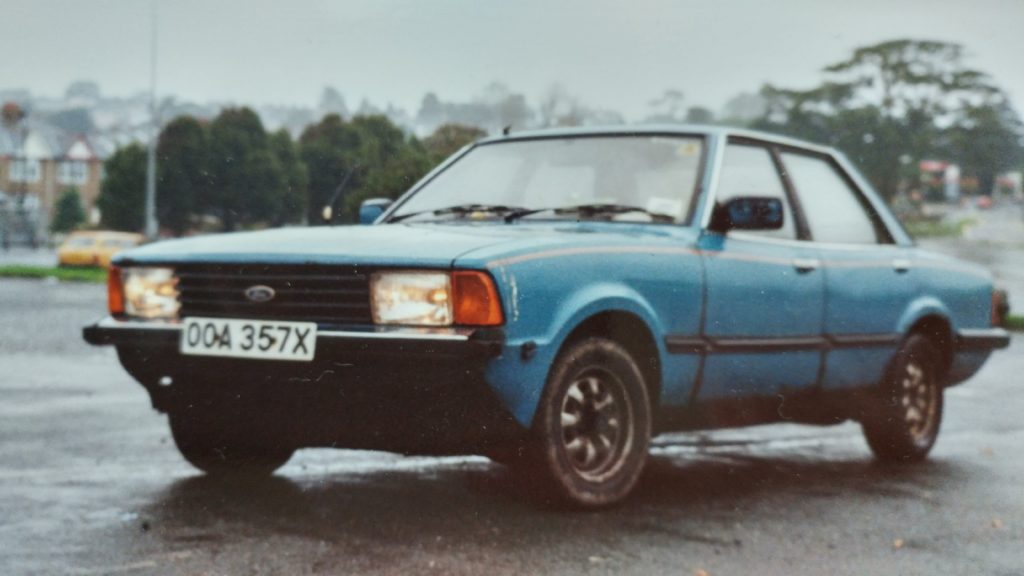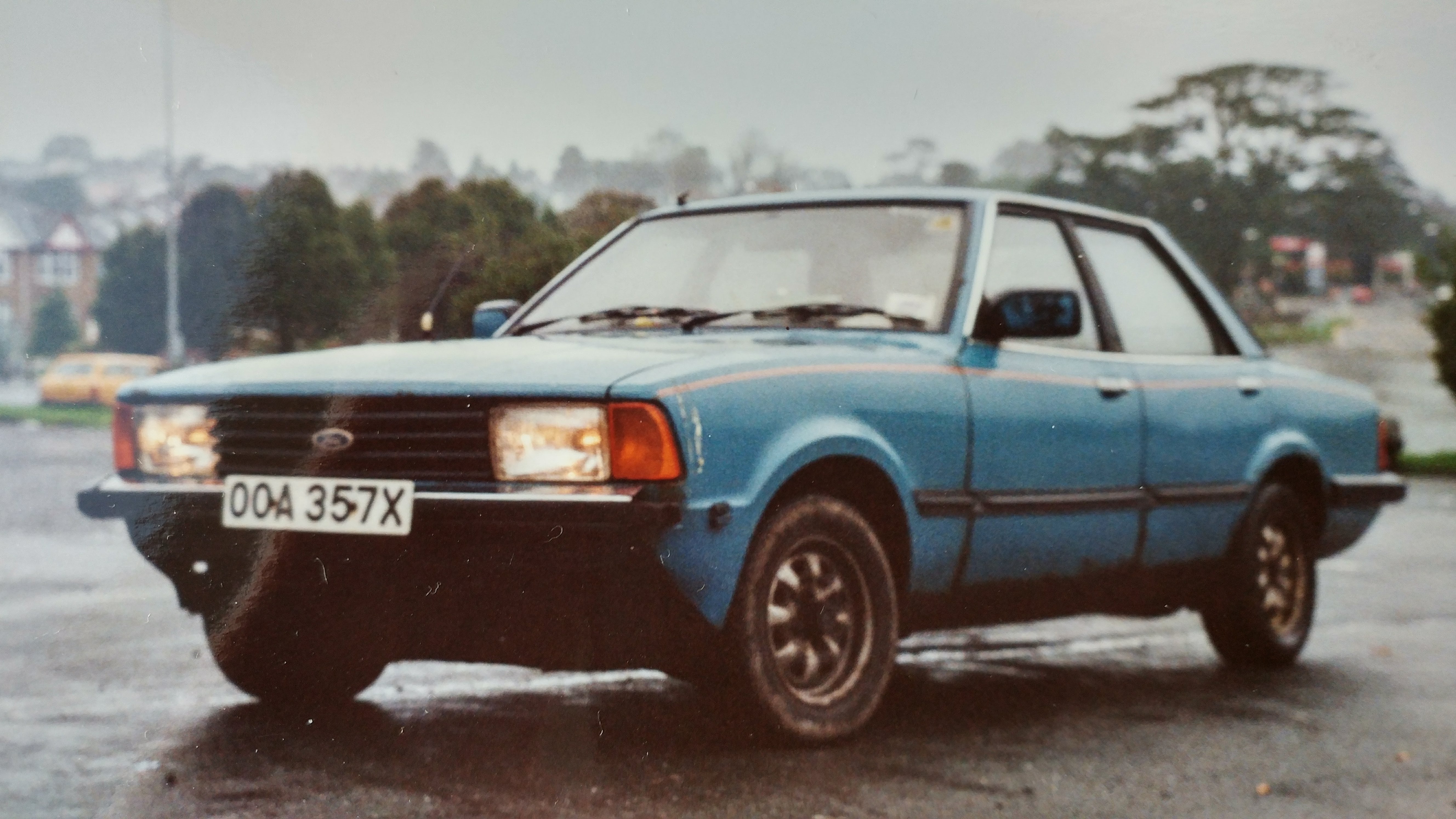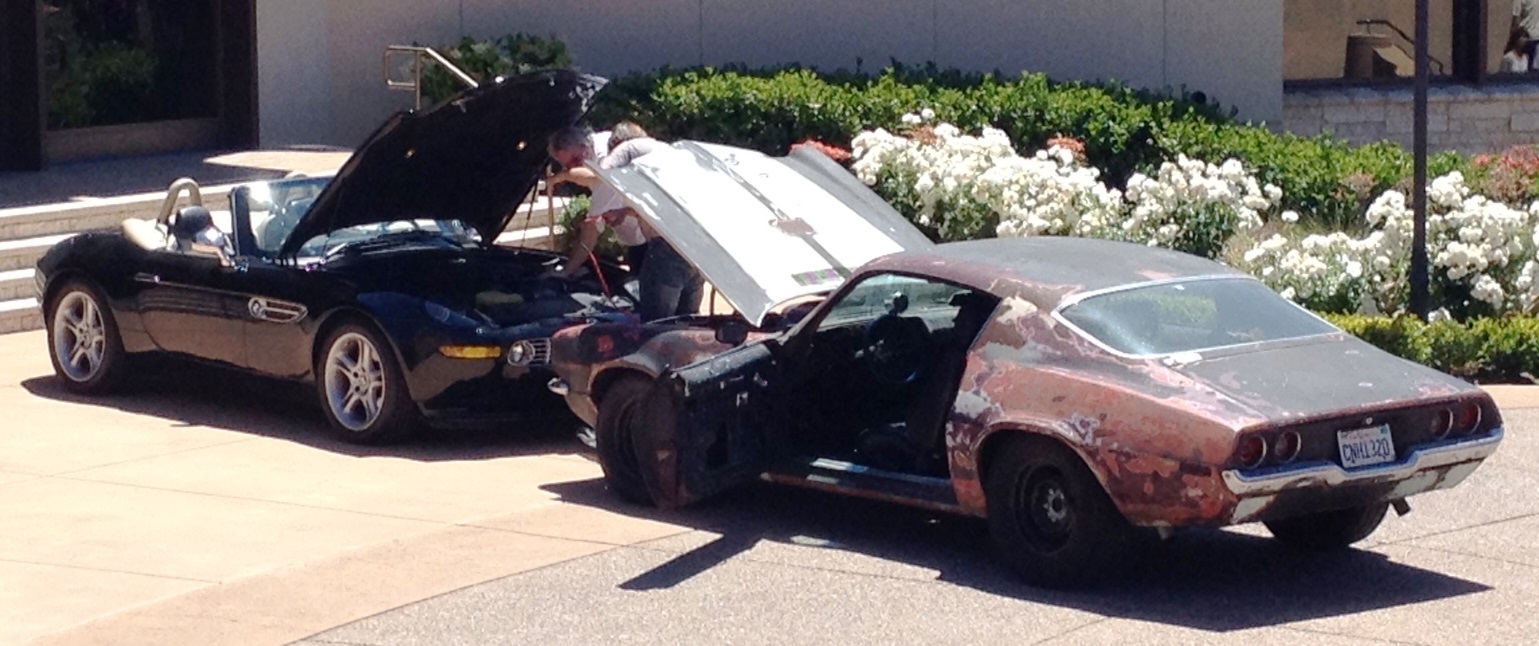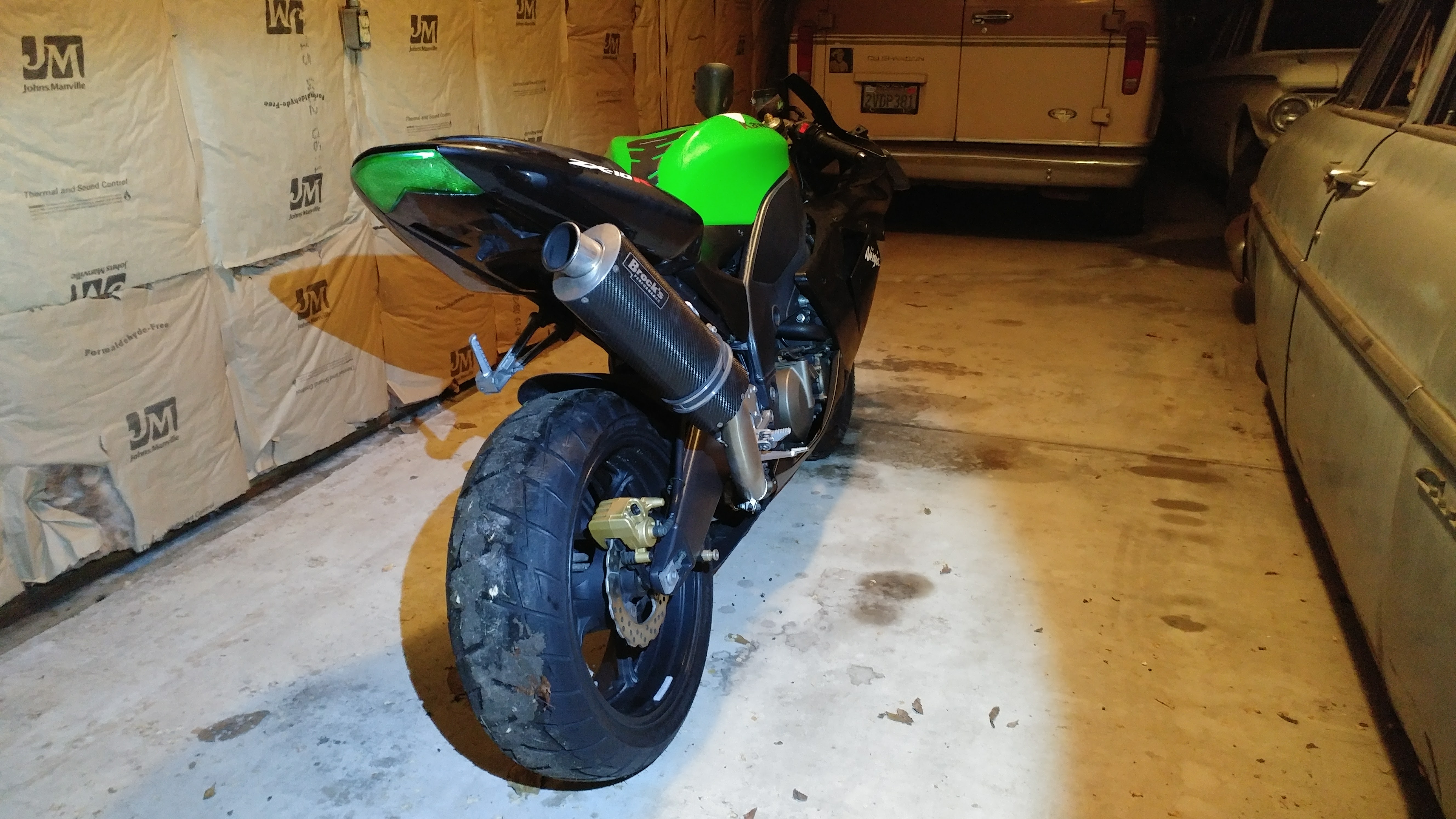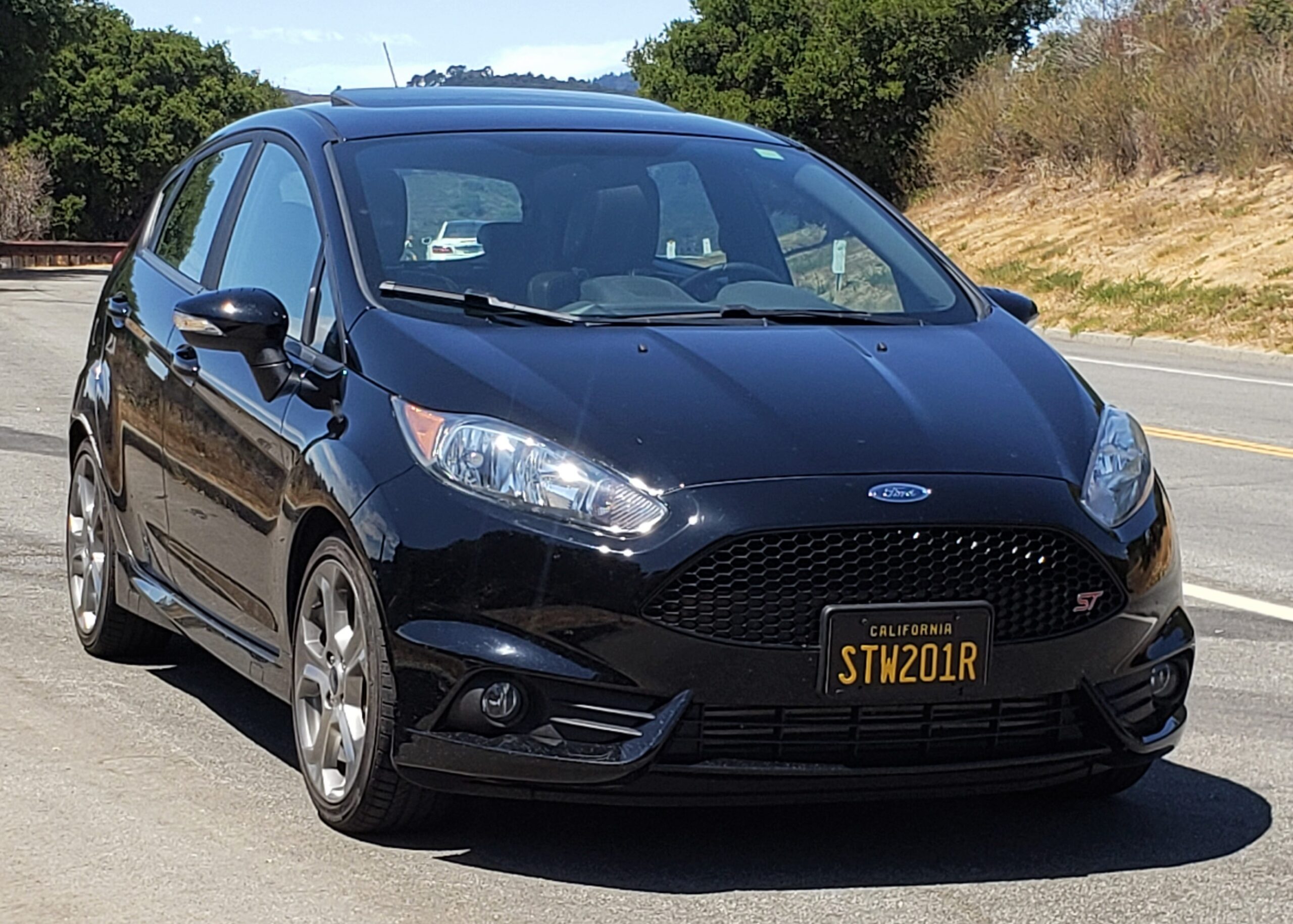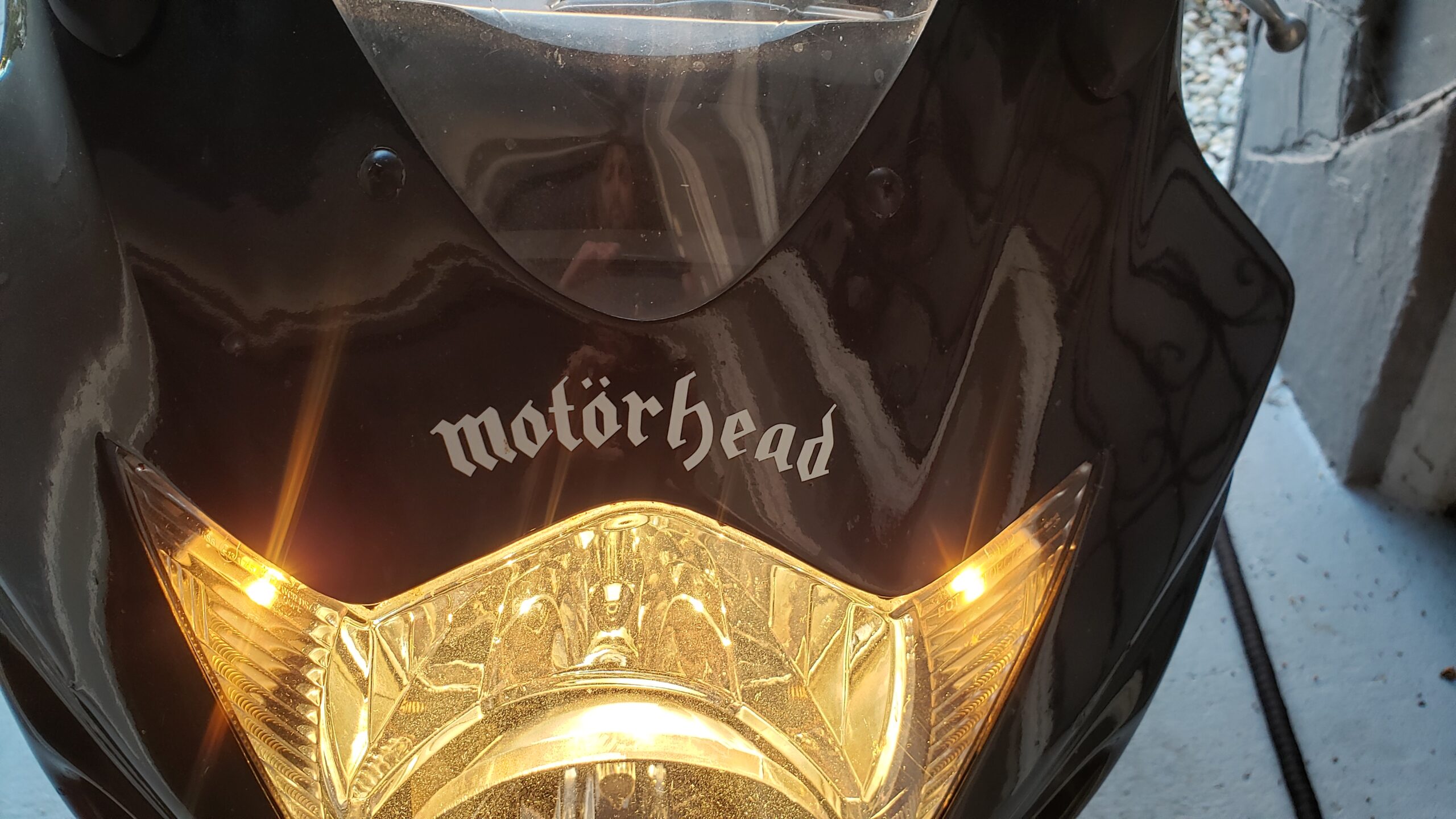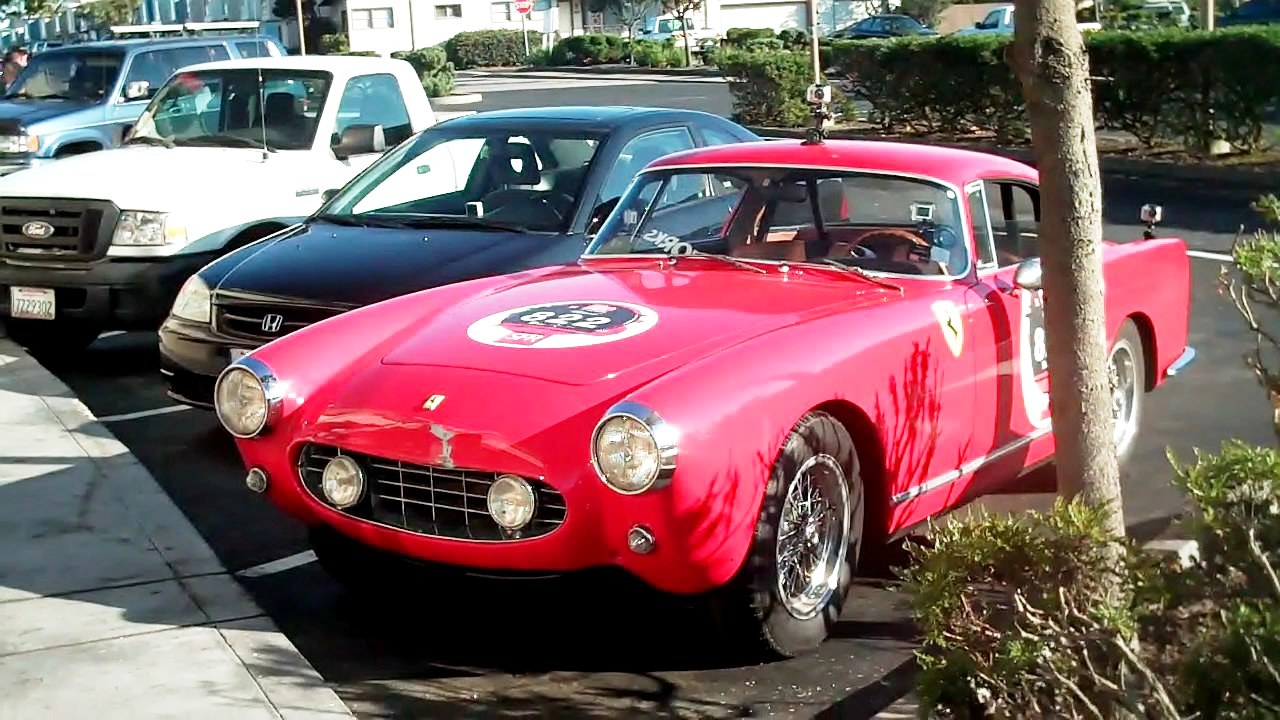

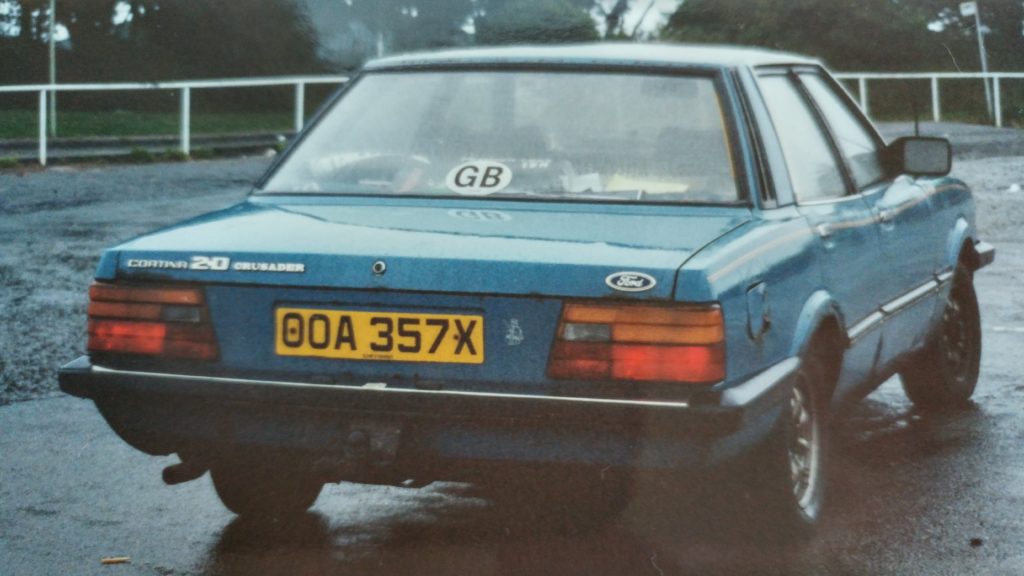
This was my third car, and my third Cortina. As observed before, my Dad, anything but a lawbreaker himself, agreed with the public enemy era outlaws that “For sustained speed and freedom from trouble the Ford has got ever other car skinned”
As a 1982 example, this was one of the very last, a 2.0 litre Crusader. The Crusader referred to the chucking in of the whole options list and a special side stripe package in order to get the last ones out the door before the debut of the Sierra.
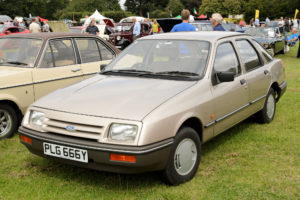
It is a sign of the times that the name was mere historical reference in those pre-9/11 days, lacking the political charge of the term Crusader today. There was even a little graphic of a Richard Lionheart type with armour, sword and shield on the back, between the number plate and and tail light.
Once, more than 1 in 3 cars on Britain’s roads were Cortinas of one age or another; they were Britain’s best selling car of the seventies, enjoying a twenty year production run ending with sales to people who had no idea about Cortina d’Ampezzo and the 1963 Winter Olympics, the original inspiration for the name. Today, all five generations are appreciating collectibles, both because they are rare, but more because so many people have such strong associations with them. To see one is to meet an old friend, to sit in and drive it is to have a beer with that old friend, and realize they haven’t changed. Because unlike people, cars don’t change.
TV land embraced the Cortina, more in it’s grubby, lived in form than as its maker may have intended: as the last MkVs left the production line, the BBC arts magazine Arena devoted and episode to the Cortina; there was a long-lived sit-com “Keeping Up Appearances”, wherein a layabout character used a tired Cortina which often backfired to (pretty limited, it must be said) comic effect. The comic effect was perhaps a little more effective in “Father Ted”, where Ted owned a ratty blue example pretty similar to OOA:
DOUGAL: “I think he’s just pulled up Ted, the only thing though he can only afford a crappy blue Ford Cortina, imagine going around in that thing!”
TED: “That’s my car!”
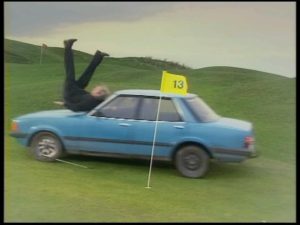
As I have observed elsewhere, something special happens as the twentieth anniversary of something passes; the Cortina, leant the retro TV show “Life on Mars” true seventies credibility, featuring a metallic brown Mk.3 2000E.
But Why Three Cortinas?
As the ad suggests, Ford did give you more, just perhaps not what the ad copy writer had in mind:
– Easy to repair
– Reliable
– Good to drive (relatively speaking)
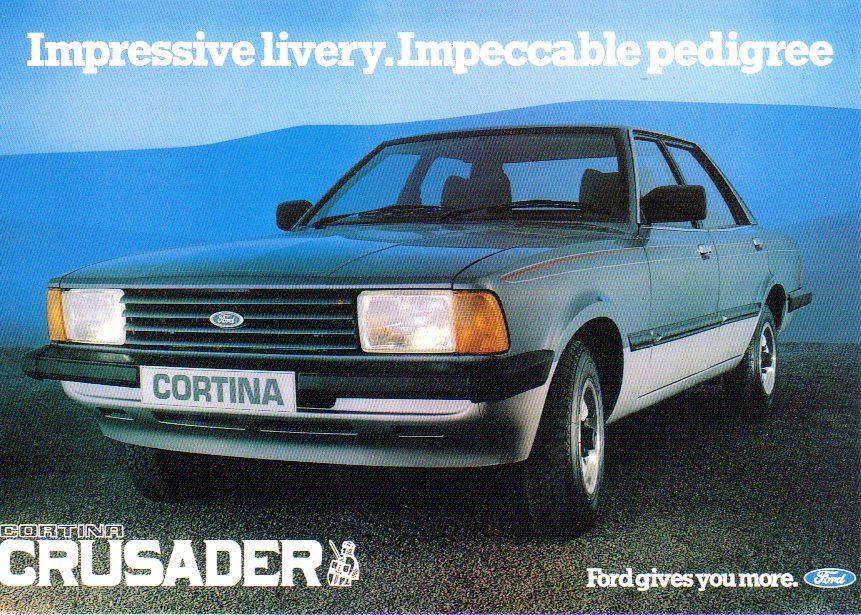
Throughout my childhood, my Dad owned, not exclusively, Fords, and by the time I was a teenager, they were the cars he knew how best to fix. They were common, so it was easy to get parts. His way of slowing me down was decreeing nothing over 1.6 litres, no twin cams, fuel injection or turbos. Thus Jaguars, Alfas and Lancias remained a fantasy. Just as well really, I nearly had an enormous accident not long after passing my test, and I am pretty certain the extra power a Renault 18 Turbo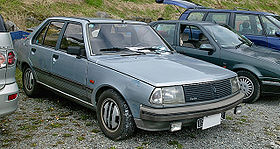 or Lancia Beta
or Lancia Beta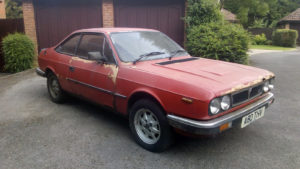 had would have been enough to make that error of judgement one punishable by hospital at best ;-/
had would have been enough to make that error of judgement one punishable by hospital at best ;-/
So, with the sensible decree of Dad in place, I had focused on Fords. Escort and Capri were too showy, too boy racer. While Escort had the rally credibility – and the strongest values today – Capri and Cortina had the same, usually larger capacity engines, and since Cortinas were more common, and had a four door old man body, they were cheaper both when I was 17, and now I am 44.
The first one l had kept me loyal – remember, I am a hopeless mechanic even today, and was utterly unskilled as a 17 year old, and since it is always rainy and wet in England, and often cold too, breakdowns are a painful experience well worth avoiding.
Dodgy Carb
My Dad came up to Leeds, where I was a student, to help me buy this Cortina. We drove down to Pontefract to look at it, a place for which the phrase “It’s grim up North” might have been invented. Driving back to Leeds, the car really struggled on hills when you came into the gas. When actually forced to stop at the roadside, where we found that the carburettor was held together with carpentry screws. Even today I am still dumbfounded by the butchery here – as if it was ever going to work properly !!!! Even with new gaskets and the right screws, it would never quite seal properly. It was a twin choke affair, and the second choke would always stick closed, eventually opening with a bang further up the rev range. I remember it as a kind of turbo boost, but somehow I doubt I would be impressed today. Why did I never just go to a breakers yard and get a new carb? Who knows.
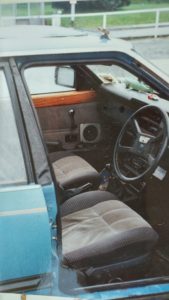
Note the grey velour seats and real wood door capping. This was only offered on the Ghia and Crusader models. The peak of luxury appointments.
Note also the shift lever: that trans is a 4 speed. Sierra offered 5 speed, Cortina’s were always 4 speed. Comfortable at 80, much beyond that very buzzy and tiring. One day, the shift lever came right off in my hand. I remember the shock of having it waving around, totally detached from the car. Luckily I had generated enough momentum pulling out of the junction in 1st that I just kept the clutch let in, and coasted a few miles downhill where, as luck would have it, there happened to be a garage. Lurking in their yard was a rather scabby red Capri 3.0 S, which the garage guy saw me eying and offered to take the Cortina and some cash for. I should’ve bitten his arm off; instead I had him fix the Cortina.
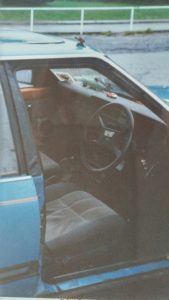
Note the rippled sunroof here. This damage was acquired shortly after I bought it. One day, having had the sunroof open, I wound it closed, only for it blew out, at speed, going far into the air, and then slicing back to earth like a giant rusty frisbee, bashing off the wall of a house and taking a large chuck of brick with it. Our man abandoned efforts to refit the offending article at the roadside, choosing instead to escape the increasingly hostile crowd.
These pictures were taken in front of Home Park, in Plymouth Argyll Football Club’s car park, which suggests I drove down there from my parents house, about 3 miles from here. Note also the rainy damp atmosphere, serving as a reminder of why I emigrated somewhere sunny.
I bought the car to do a job which involved driving to small villages and selling aerial photographs door to door. I was based in Malvern, where they make Morgans. I visited the factory weekly – unlike now, there was no need to book a factory tour. The roads around Malvern are classic British A- and B- road. Crowned, and by turns rough and smooth, fast and slow. After I finished work, I would often have a pint of beer in the village pub before driving home. I remember being stuck by how even after that single pint – which I didn’t “feel” – I could not place the car properly on bends – by that I mean not that I couldn’t drive home safely, but rather that when driving at the eight tenths which was my wont at that foolish age, I couldn’t judge the understeer properly, thrashing along half remembered country lanes, and had to drive slower than when cold sober.
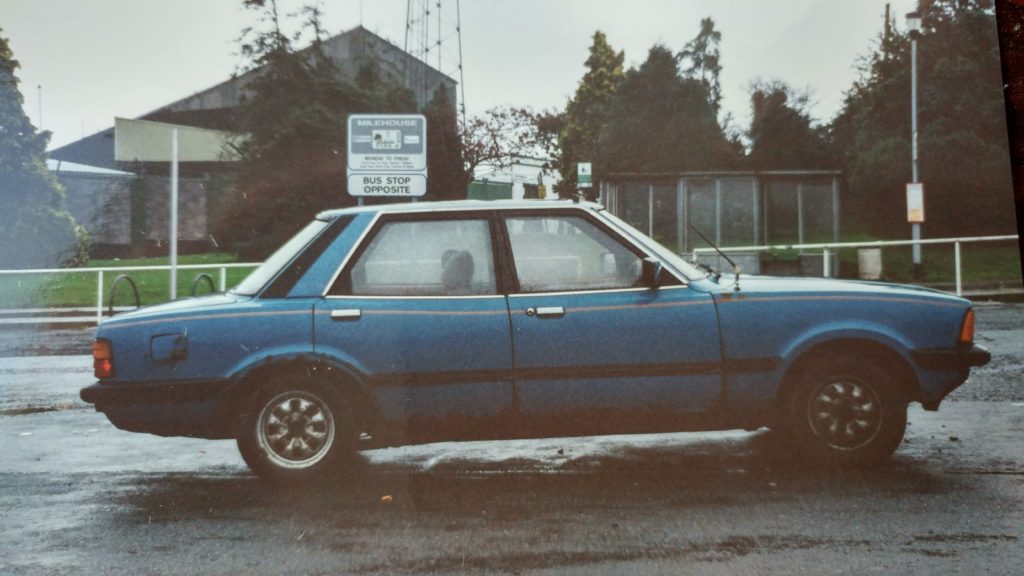
One road was a particular favourite. Others would fight over the best photos, in order to sell the most and earn the most. I just wanted the photos which took me along the best roads. One day, I discovered roadworks halfway along a favourite road. I remember feeling cheated of a straight which I usually enjoyed. As I drove along the contra-flow section, I came face to face with the car waiting at the light to come the other way. I recognized it from car magazines; a McLaren F1, then in prototype guise. But more memorable was the driver: Gordon Murray. A delicious memory, since OOA 357 X represented the very opposite of Murray’s efficient design ethos.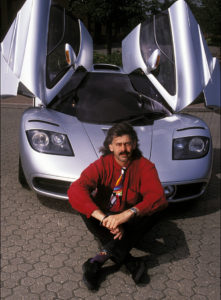
Epitaph
Unwilling to the point of inability to sell it myself, while I was away at University, my Dad put it into a local car auction. It hammered for 30 quid, and was last seen being driven away by a swarm of gypsies.
